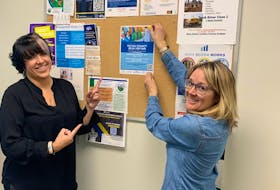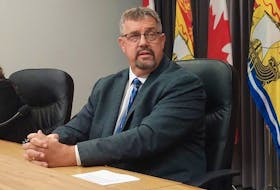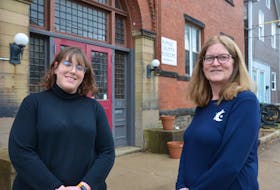SUMMERSIDE, P.E.I. — Four bags of trash, two medium and two small, sat on Alan Bridle’s desk.
Their contents, said the Summerside resident, have been carefully curated over the past 12 months. They contained all the items for which he could not find an appropriate recycling stream in the past year.
“This is just the stuff that I have no idea what to do with next, which would therefore become garbage,” said Bridle.
All told, it was about 2.4 kg worth of miscellaneous trash. Most of it would not be out of place any typical Island household.
Which, according to Bridle’s reasoning, is the problem.
Bridle, 73, has been a dedicated evangelist of the “Three Rs,” reduce, reuse, recycle, for most of his life.
Recycling dead-zones

His parents were British citizens and lived through the severe rationing implemented during the Second World War. They never really lost that distaste for wastefulness.
His family immigrated to Canada when he was in his late teens and we went on to become an actor and general construction contractor in the greater Toronto area.
He retired with his family to Summerside in 2017 and immediately developed an admiration for the Island’s waste management system. He dutifully cleans and separates his trash into its respective recyclable, compost and waste streams.
He holds a well-worn copy of the Island Waste Management Corporation (IWMC) guide on how to separate trash as something of a personal bible.
But it didn’t take long for Bridle to realize that not every bit of plastic packaging he encountered had an obvious recycling stream which he could discern from the guide. Some plastic pieces, for example, do not have a universal “R” recycling symbol so they would be considered trash.
That didn’t sit right with Bridle.
“You look at these things and you think, ‘Why? Why is this waste and how can we afford to put it into (a landfill),” he said.
“So, it became a matter of whatever I can’t recycle based on information from (the IWMC guide) I would keep.”
He decided to make the experience something of a personal experiment, just to see how much waste he would personally produce over the year.
“In a way it was a personal project or self-education of what (trash) I’m responsible for, what I produce,” he said.
“Then I thought perhaps there could be implications for this, inferences that you could take this further and say ‘therefore, why do we have so much garbage and why do we have so many manufacturers that produce packaging which simply doesn’t have a second use, a re-use, or can’t be recycled according to our recycling facilities on the Island.’ So why do we keep producing stuff that is going to end up in the landfill?”
Satisfying experiment

Bridle didn’t change any of his shopping habits for his experiment. Though he now lives alone and generally tries to keep waste in mind when he shops.
Looking back at the results of his experiment, those four bags on his desk, he is pleased with the results. He sees the end result as an indication that all his recycling is paying off.
“If this is all you end up with, well then it makes you think that we don’t have to do too much to improve the amount of waste we’re producing. So in a way it’s an indicator that there’s not that far to go,” he said.
Merie Surkan, manager of public relations and marketing with IWMC, praised Bridle’s initiative.
“I wish more people were like him,” said Surkan.
“Awareness is key. Being aware of what you’re throwing away and being aware that’s going to a landfill forever and nothing can be made from it helps us make better decisions about what we’re consuming, what we’re buying.”
Surkan added that while the recycling guide mail-out is a good resource there is only so much you can fit on a slip of paper, so it is augmented by the IWMC’s online resources.
It’s website, www.iwmc.pe.ca has an interactive sorting guide where Islanders who are unsure about an items’ recyclability can search keywords and the results will tell them what stream it should be disposed of in. The system is also adaptive in that IWMC can see if there is an uptick in searches for a particular term and update their listings appropriately.
Surkan also said that IWMC is gearing up to roll out a new online sorting guide that will be more user-friendly and will include photos of items.
Islanders can also call the IWMC customer service line during business hours and ask about particular items they are unsure of how to recycle.
When informed of these additional resource, Bridle said he planned to visit them and see if he could narrow down the trash in bags even more.
As for what he intends to do with whatever he has left – he hasn’t decided yet but is considering turning it into an art piece or compressing it down into bricks and building something with it.
Whatever it takes, he said, to keep that much more trash away from the soil of this Island he now calls home.
Top five blue bag errors according to Island Waste Management Corporation:
- 1. Material that is not clean
- 2. Non-recyclable paper in Blue Bag #1: serviettes, kleenex, paper towels, wrapping paper, boxboard, cardstock, etc.
- 3. Coffee cans that are made with painted pulp paper on the sides with a metal bottom and top ring
- 4. Metal items that are less than 50 per cent metal such as: a vacuum cleaner/coffee maker
- 5. Items that require special disposal: batteries, electronics, paint cans, etc.








